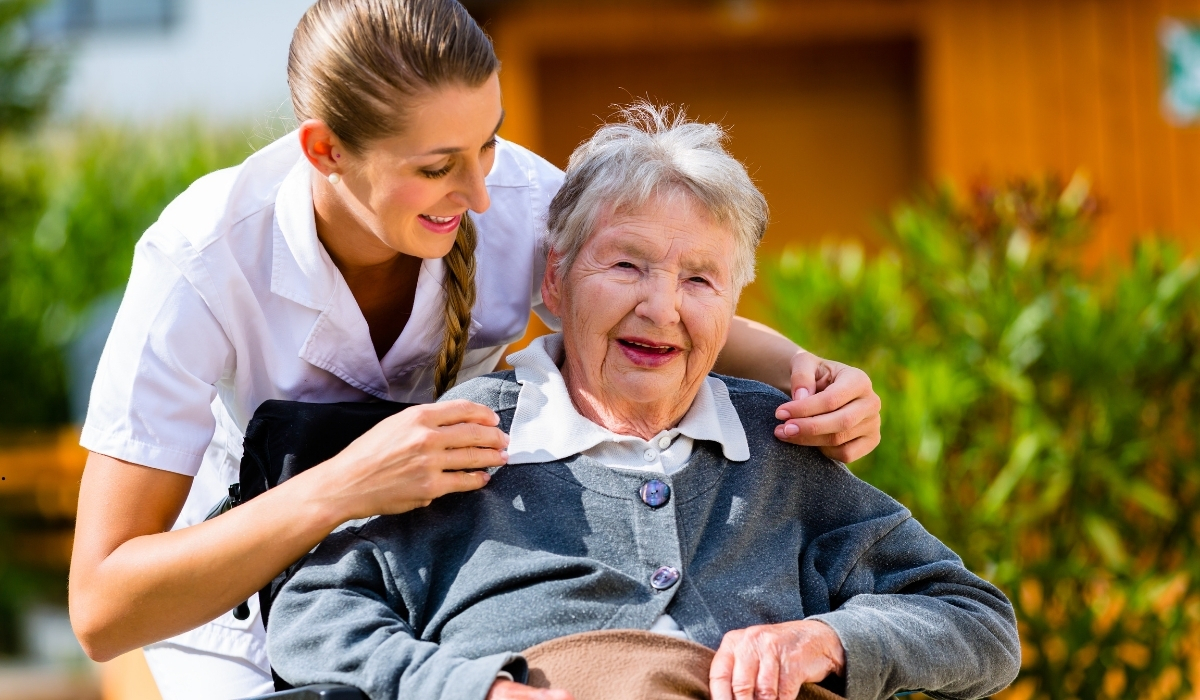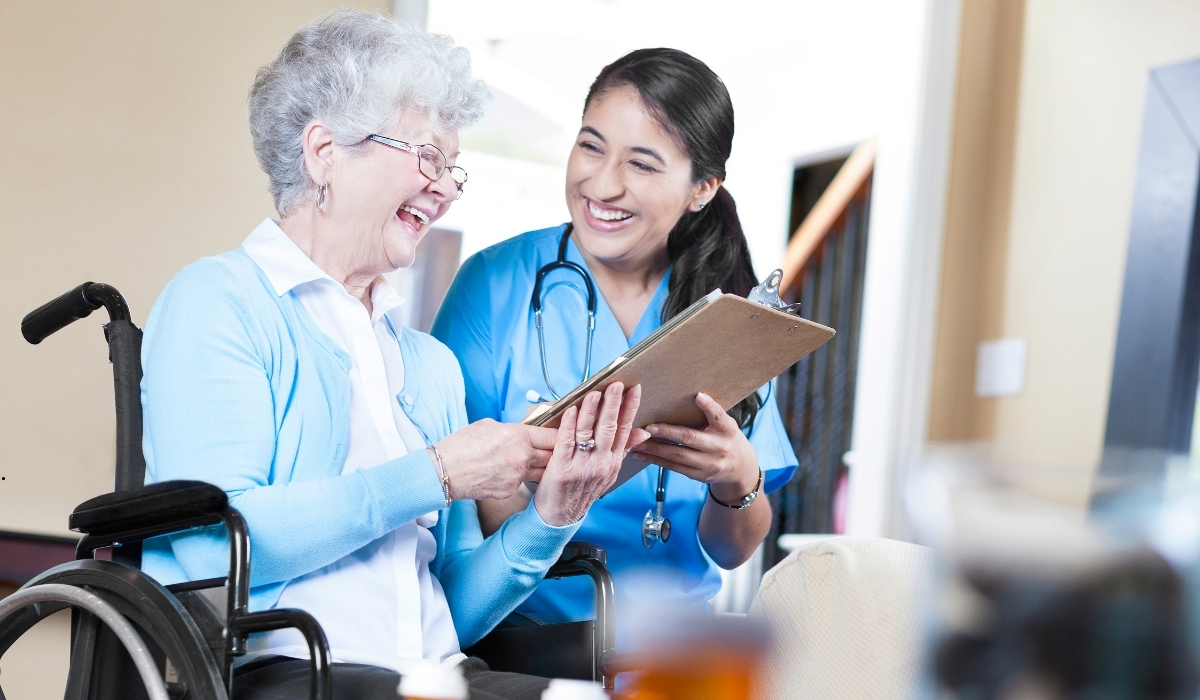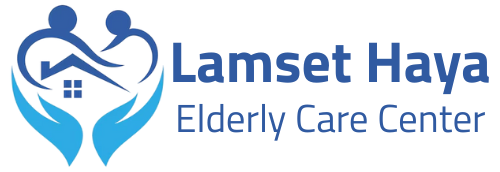Introduction
Lamset Hayat’s Vision of Care
Classification of Physical and Motor Activities at Lamset Hayat
How to Design an Activity Program: Methodology and Stages
Practical Examples of Activities at Lamset Hayat
Challenges That May Arise in Implementing Physical Activities in a Nursing Home
The Role of the Specialized Team at Lamset Hayah
Stories and Experiences
Recommendations and Guidelines to Ensure Program Success
Sources
Introduction
As people age, maintaining physical and motor activity becomes not just a recreational option but a vital necessity for preserving health, dignity, and independence. At Lamset Hayat Elderly Care Home, physical and motor activities are integrated as a fundamental part of its holistic care philosophy, serving as a bridge between body and mind, movement and well-being. In this article, we shed light on the strategies of these activities, the philosophy behind them, the types of exercises, the role of the specialized team, the challenges faced in implementation, and conclude with future recommendations.

The Philosophy of Lamset Hayat Home and the Importance of Physical and Motor Activities
Lamset Hayat’s Vision of Care
Lamset Hayat Home does not consider itself merely a place for shelter or superficial care, but rather a vibrant community that goes beyond the traditional concept of a nursing home. It is an environment that encourages activity, communication, continuous growth, and stimulation of remaining abilities. From its official platform, it emphasizes that activities — including physical and motor activities — represent a central tool for achieving this vision. Lamset Hayat Elderly Care Home
Every resident is viewed as an individual with unique abilities and needs, and a personalized program is designed to respect these differences and reduce health risks. Lamset Hayat Elderly Care Home
Why are physical and motor activities essential for seniors?
From well-known studies and proven practices, regular participation in movement — even light movement — provides major health, psychological, and social benefits, including:
-
Maintaining muscle strength and flexibility: Muscle mass tends to decline with age, which increases the risk of falls and injuries.
-
Improving balance and reducing fall risks: Many serious injuries among seniors result from falls, and exercises focused on balance help lower this risk.
-
Enhancing cardiovascular health: Movement boosts circulation, lowers blood pressure, and improves heart and lung efficiency.
-
Supporting mental health: Physical activity releases happiness hormones (endorphins), reducing stress, anxiety, and depression.
-
Stimulating cognitive abilities: Studies link physical exercise with increased blood flow to the brain, supporting memory and processing speed.
-
Encouraging social integration and stronger bonds: Group activities promote interaction, idea-sharing, and a sense of belonging.
-
Prolonging quality of life: What matters is not only living longer, but ensuring those years are full of vitality and activity.
Within the context of Lamset Hayat, these activities are viewed not as an option, but as a fundamental pillar of the care services provided.

Classification of Physical and Motor Activities at Lamset Hayat
Lamset Hayat Nursing Home integrates several types of motor activities into its programs, categorized by purpose, effort level, and adaptation to residents’ abilities. Below is an overview of these types:
1. Moderate Fitness and Flexibility Exercises
This category includes simple exercises often practiced indoors or while seated:
-
Chair Exercises: Movements performed by residents while sitting, targeting the limbs (arms, legs) within safe ranges, strengthening core muscles without significant strain.
-
Gentle Yoga and Stretching: Slow, controlled movements to relax muscles, improve joint flexibility, and focus on mindful breathing.
-
Light Resistance Exercises: Using elastic bands or very light weights suitable for seniors, aimed at strengthening key muscles (limbs, back, trunk).
These exercises are offered under professional supervision, with levels adjusted according to each individual’s ability.
2. Balance and Walking Activities
Walking and improving balance are considered essential activities to achieve greater independence:
-
Balance Exercises: Static postures and slow movements focusing on trunk stability, sensory feedback, and eye-foot coordination.
-
Walking in Safe Spaces: Taking advantage of gardens and prepared walkways within Lamset Hayat, allowing residents to move around in a supervised environment.
-
Assisted Walking: For some residents who may need support, companions or assistive tools (canes or walkers) are provided to ensure safe mobility.
These activities are offered at regular times to encourage daily movement and reduce immobility.
3. Interactive Motor Activities and Games
To combine enjoyment with benefits, activities include:
-
Modified Games: Such as tossing a light ball at targets, mini-bowling, or simple contests requiring light movement.
-
Music and Movement Therapy: Combining music with movement stimulation (such as light dancing or moving arms to musical rhythm).
-
Gardening and Plant Care: Light activities like planting, watering, light weeding, or soil cultivation. These simple movements help activate limbs and stimulate a sense of achievement.
The goal of these activities is to merge physical benefit with social interaction and joy
How to Design an Activity Program: Methodology and Stages
To implement a safe and effective physical and motor activity program, several stages must be followed, from assessment to execution and follow-up. Below are the key steps that Lamset Hayat is likely to adopt:
1. Initial Assessment of the Case
Before starting any activity, each resident undergoes an individual assessment, which includes:
-
General health status (chronic diseases, heart conditions, osteoporosis, joint problems).
-
Remaining motor abilities (standing, walking, balance).
-
Presence of medical restrictions or contraindications.
-
Potential goals and willingness to participate.
-
Personal preferences (what type of activity the resident enjoys).
Based on this assessment, a customized and adaptive program is designed for each individual.
2. Setting Step-by-Step Goals
Each resident is assigned a set of realistic goals that can be gradually achieved, such as:
-
Walking a short distance without support.
-
Standing steadily for a specific period.
-
Raising one arm or leg several times.
-
Participating in a simple recreational activity.
These goals help motivate residents, allow them to anticipate progress, and serve as benchmarks for program success.
3. Selecting and Scheduling Suitable Activities
The program is designed to combine safe and stimulating activities, considering:
-
Variety to reduce boredom (seated exercises, walking, recreational activities).
-
Appropriate frequency (daily, three times a week, depending on ability).
-
Time distribution: shorter, safer sessions for the elderly.
-
Adequate relaxation periods.
4. Implementing Activities Under Professional Supervision
-
A physical therapist or specialized trainer supervises to correct postures and monitor performance.
-
Continuous follow-up to adjust activities when necessary.
-
Consideration of adaptation and gradual load increase (slightly raising intensity or duration when ability improves).
5. Ongoing Monitoring and Evaluation
-
Measuring progress regularly (e.g., monthly) against the set goals.
-
Resident feedback surveys: Do they feel improvement? Does the activity bring enjoyment?
-
Adjusting the program based on health changes and evolving needs.
This structured methodology ensures sustainable benefits while minimizing the risks of fatigue or injury.

Practical Examples of Activities at Lamset Hayat
Below is a set of activities that are actually applied or could potentially be implemented at Lamset Hayat Care Home, according to what is listed on the center’s website and what is commonly practiced in elderly care programs:
| Activity | Description / Implementation | Expected Benefit | Execution Notes |
|---|---|---|---|
| Chair Exercises | A morning session where residents sit on chairs and perform movements such as raising arms, stretching legs, shoulder rotations | Strengthening core muscles, improving flexibility | Recommended to start with a short 10–15 minute session |
| Light Yoga and Stretching | Simple, slow movements with a focus on breathing | Improves flexibility and reduces muscle tension | Ensure no resident is forced into painful movements |
| Walking in Corridors / Garden | Supervised walking rounds within a safe area | Enhances fitness, supports vitamin D production, improves mood | Walkers or companions can be provided if needed |
| Balance Exercises | Standing on one leg for a few seconds, slow sideways movements | Increases stability and reduces fall risk | Initial support with a rail or firm hold may be necessary |
| Throwing and Aiming Games | Throwing light balls at a target such as a low basket | Improves hand-eye coordination, encourages social interaction | Choose appropriate balls and a safe space |
| Music and Movement | Playing familiar songs and encouraging light movement | Boosts mood, gently stimulates physical activity | Use calm, suitable rhythms |
| Gardening | Planting, watering, soil cleaning | Provides light exercise, a sense of achievement, and connection with nature | Ensure a suitable space and minimize bending as much as possible |
These examples can be developed and adapted according to residents’ abilities and represent models of what Lamset Hayat can include within its program.
Challenges That May Arise in Implementing Physical Activities in a Nursing Home
Despite the great benefits, implementing an appropriate movement program in a senior care facility is not easy, and there are challenges that need to be addressed:
-
Differences in Health Conditions
Each resident may suffer from chronic illnesses (such as diabetes, heart disease, osteoporosis, joint problems), which limit some individuals’ ability to participate. A flexible program must be designed to allow for varying levels of effort. -
Fear of Injury or Falling
Many residents may have a fear of falling, or suffer from chronic pain that makes them hesitant to participate. This requires careful supervision and gradual, personalized encouragement. -
Lack of Qualified Staff or Time
There may not always be enough specialized therapists or trainers available to follow up with all residents, or the time allocated for activity may be limited. -
Psychological Resistance or Lack of Motivation
Some seniors may feel lazy, hopeless, or believe that “old age no longer allows for movement.” This requires psychological motivation, constant encouragement, and connecting the activity to a meaningful goal for them. -
Limited Space or Environment
If open areas or hallways are not adequately prepared or safe, it may be difficult to provide suitable walking or balance spaces for all residents. -
Sudden Health Changes
Medical emergencies or changes in medication may arise, requiring a temporary pause in activities, or major adjustments to the program. -
Balancing Benefit and Comfort
It is very important that activities are not excessive or put too much strain on residents, but instead remain moderate and gradual. There is a fine line between challenge and safe boundaries.
Lamset Haya, according to what is mentioned on its website, is aware of these challenges and emphasizes specialized supervision and individualized adjustments of activities as part of its philosophy.
The Role of the Specialized Team at Lamset Hayah
To ensure that physical and motor activities are effective and safe, they must be supported by a team of specialists. The expected roles are as follows:
-
Physiotherapist / Rehabilitation Specialist: Assess motor condition, design exercises, monitor performance, and adjust the program according to progress or health changes.
-
Fitness Trainer Specialized in Seniors: Provide exercises in an appropriate manner, motivate residents, and ensure correct postures.
-
Activity Supervisor or Companion: Assist in implementation, accompany residents who need support, and ensure safety during movement.
-
Nurse / Medical Staff: Monitor health effects or any sudden health changes during activity, and ensure that medications and medical conditions do not conflict with the exercises.
-
Social / Psychological Staff: Encourage residents to participate, address fear or anxiety, and provide psychological support and motivation.
-
Administrator / Event Organizer: Coordinate the timing and logistics of activities, prepare equipment, designate spaces, monitor attendance, and oversee general organization.
With this harmony between specialties, the activity program can become more integrated, safer, and more beneficial.
Stories and Experiences (that may exist or can be suggested)
Dar Lamset Hayat, if it wishes, can highlight real stories of residents who have benefited from physical activities, such as:
-
A resident who started by walking a short distance, and over the weeks gradually improved until he could walk in the garden without assistance.
-
A female resident who suffered from joint stiffness, but thanks to light exercises and yoga, became able to perform simpler daily movements such as filling a glass of water or reaching a slightly higher shelf.
-
A group of residents who participated in a music and light dance activity, gaining joy and a better mood, increased confidence in movement, and began encouraging each other.
-
Social situations: intergenerational meetings where students visit the center and take part in movement activities, making the elderly feel valued and connected.
Such stories add an appealing human dimension to the programs and serve as motivation for other residents and their families.
Recommendations and Guidelines to Ensure Program Success
-
Start gradually: Do not overwhelm new residents with intensive exercises at the beginning; start with light, short sessions and increase gradually.
-
Respect individual differences: The program should be adaptable according to each person’s health, abilities, and preferences.
-
Focus on psychological motivation: Use encouragement, celebrate progress, and involve the family.
-
Use a safe and suitable environment: Ensure safe flooring, handrails, good lighting, and proper space arrangement.
-
Diversify activities: To avoid boredom, offer a variety of exercises (seated, walking, games, music, gardening).
-
Regular monitoring and evaluation: Measure progress and adjust the program when needed.
-
Continuous training and development for staff: It is important for the team to develop their skills and knowledge of the latest methods in senior fitness and physical therapy.
-
Link with external resources: Build partnerships with rehabilitation centers, universities, volunteers, or introduce simple technological tools (light exercise apps, videos).
-
Include sufficient rest periods: Ensure there are adequate breaks between sessions to avoid fatigue.
-
Communicate with families: Involve relatives in some activities or invite them to participate to strengthen support and interaction.
